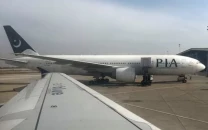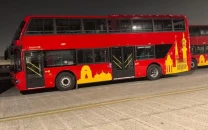Poor access to education
When will children’s rights be recognised and protected as a fundamental constitutional obligation?

The writer is Director Programmes at the Idara-e-Taleem-o-Aagahi in Lahore
These findings were made public in the report of Pakistan’s largest, annual, citizen-led household based ASER Survey 2013 — the fifth ASER Survey report in a row — launched in Islamabad on January 16, 2014. The ASER 2013 survey has been conducted by 10,000 volunteers managed by the Idara-e-Taleem-o-Aagahi (ITA) along with many key civil society semi- autonomous bodies.
The report aims to inform the progress or lack thereof with respect to Article 25-A of the Constitution, which makes education a fundamental right for children between five and 16 years of age since 2010. To date, its implementation has yet to take place as both laws and rules remain in abeyance. In spite of public demand, the state response at best continues to remain neutral to education as a basic need. Parliamentarians and ministers made commitments to be held accountable as duty bearers, but they must walk the talk.
The report states that the private sector is performing better than the government sector as far as the learning levels of children and student and teacher attendance are concerned. The survey reveals a clear urban-rural divide, whereby urban areas perform better in terms of access (92 per cent children in schools as compared with 78 per cent in rural areas) and infrastructure facilities; however, learning levels remain marginally better than rural areas with a high incidence of private tuitions in urban areas. Shockingly, teacher and student absenteeism is higher in public schools in urban than in rural areas.
According to the report, student competencies in learning English and arithmetic are deplorable. Half of the children from class five cannot read class two level texts in Urdu, Sindhi or Pashto. In English, only 43 per cent of the surveyed class five students could read sentences which should ideally be read by students from the second grade. Compared with last year, the learning levels in English have deteriorated by five per cent. A similar trend has been observed in the arithmetic capabilities of children where only 43 per cent of class five children were able to do a two-digit division, something that is expected in the class two curriculum.
The ASER Survey has also identified that children enrolled in private schools are performing better compared with those studying in government schools. Furthermore, the survey explains that boys are outperforming girls in literacy and numeracy skills in rural Pakistan.
In addition to the assessment of children, the report also highlights school functioning across every district in Pakistan. The ASER rural survey informs that, overall, teachers’ attendance in government schools stood at 87 per cent as compared with 93 per cent in private schools on the day of the survey. Private teachers were reported to have better qualifications at graduate levels; for example, 39 per cent teachers in private schools are graduates in comparison with only 34 per cent in government schools.
Despite of the fact that only nine per cent private schools receive funds from the government (as compared with 36 per cent public schools), the private sector has been reported to be better at school facilities. For example, 72 per cent private primary schools had boundary walls as compared with 57 per cent government primary schools. Similarly, with regard to the availability of functional toilets, it has been found that the facility was still not available in 53 per cent public and 24 per cent private schools in rural Pakistan!
When will children’s rights be recognised and protected as a fundamental constitutional obligation to enable them a safer, capable and entitled passage to adulthood? How much more evidence is needed to validate in the 21st century that education is valued by our children and youth even if lives have to be sacrificed?
Published in The Express Tribune, January 24th, 2014.
Like Opinion & Editorial on Facebook, follow @ETOpEd on Twitter to receive all updates on all our daily pieces.
















COMMENTS
Comments are moderated and generally will be posted if they are on-topic and not abusive.
For more information, please see our Comments FAQ